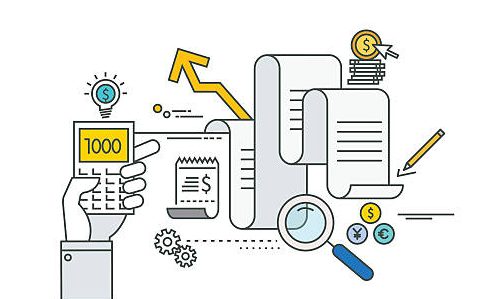For any organization to succeed, it will need proper documentation from the onset. Whether you outsource this service or have an in-house accountant, a good accounting cycle gives you a clear understanding of crucial financial matters.
WHAT IS THE ACCOUNTING CYCLE?
The accounting cycle is the cumulative process of recording and processing the accounting events of a company. It starts when a transaction happens and ends when it is entered into the financial statements. Legally, every business is required to maintain proper documentation of its financial records, allowing external agencies to conduct audits when necessary.
UNDERSTANDING THE ACCOUNTING CYCLE
The emergence of accounting software has made it easy to track the accounting cycle, keeping in mind that different processes such as accounts receivable have their own unique modules. Nonetheless, it is the point of entry that matters. The software will only perform balancing checks, but it will hardly recognize a wrong entry.
While the number of steps may vary from company to company, whether they are treated separately or combined, the accounting cycle is not cast in stone, but these events will naturally follow each other.

Step 1: Analyzing Transactions
Before you record transactions, you will need to analyze each of them thoroughly and determine where each entry needs to be placed. Essentially, you are looking to record your sales (cash and credit), purchases (at any price point), and any other financial matters that are measurable or relevant.
Here, you will need to note that events, whether internal (dealings within the firm) or external (financial interactions with parties outside the company) are measurable. This analysis will give you a basis for recording.
Step 2: Recording all Transactions
After you have evaluated the nature of events, you can now proceed to record the transaction in a journal. Be sure to put all entries into their respective journals to avoid mixing things up.
The entries will go into a trial balance, which will be automatically generated by the recording software, and, from there, they can be adjusted in preparation for your financial records.
Each journal entry will consist of amounts that are debits and credits, the transaction date, and the explanation of the transaction.
Step 3: Transferring from the Journal to the Ledger
Transferring the information from the journal to the ledger ensures that the company has a complete record of all the accounting transactions. The information that is recorded in the general ledger is what is used to create a company’s financial statements.
Step 4: Formulating an Unadjusted Trial Balance
The unadjusted trial balance is a list of the company’s accounts and balances at a given time, before any adjusting entries have been made in order to create financial statements. Debit balances are listed in the left column, while credit balances are in the right. The totals of these columns must match.

Step 5: Preparing Adjusting Entries
Adjusting entries are recorded at the end of an accounting period to amend the final balances of numerous general ledger accounts. These modifications are made to more closely align the reported results and the actual financial position of a company. Adjustments to entries follow the principles of matching and revenue recognition. The idea is to recognize the events that led to revenue generation and expenditure, while closing all the already-balanced accounts.
An adjusted trial balance only leaves relevant accounts and makes way for the financial statements.
Step 6: Preparing an Adjusted Trial Balance
Many companies prepare another trial balance from their ledger and accounts after the journalizing and posting of the adjusting entries has been completed. The adjusted trial balance shows the balance of all the accounts, including the adjusted accounts, at the end of the accounting period. The end result of this step in the accounting cycle will help demonstrate the effects of the financial events that happened during the particular reporting period for a company.
Step 7: Creating Financial Statements
One of the last phases of the accounting cycle is the preparation of the financial statement—a record of a company’s financial condition, results and cash flow. The entire journal entry process ends in the preparation of the financial statement.
A typical organization has three primary financial statements. First, there is the statement of comprehensive incomes, also known as the profit and loss account, which shows the company’s revenue and expenses. Second, the balance sheet, also called the statement of financial position, which contains all liabilities and assets of the company. This is where you will have the company’s capitalization. The third primary statement is the statement of cash flows, which shows your company’s liquidity and shareholding.
Step 8: Closing Entries
At the end of a fiscal year, a company will complete its accounting cycle. In this step of the accounting cycle, temporary balances are reduced to zero in order to prepare the accounts for the following year’s transactions. The balances at the year-end will form the basis for the next fiscal year, as the opening balances.

Step 9: Preparing the Post-Closing Trial Balance
The only accounts that will remain in your books will be the permanent entries: assets, liabilities, and owners’ equity. This balance demonstrates the evidence that a company has correctly followed the accounting cycle, since its closing entries were properly journalized and accurately posted.
Updating your books after each transaction will make the process smooth and make it easy to prepare your company’s financial statements. Is your company looking to outsource its accounting? Contact NuVest Management Services to see how we can help you.





